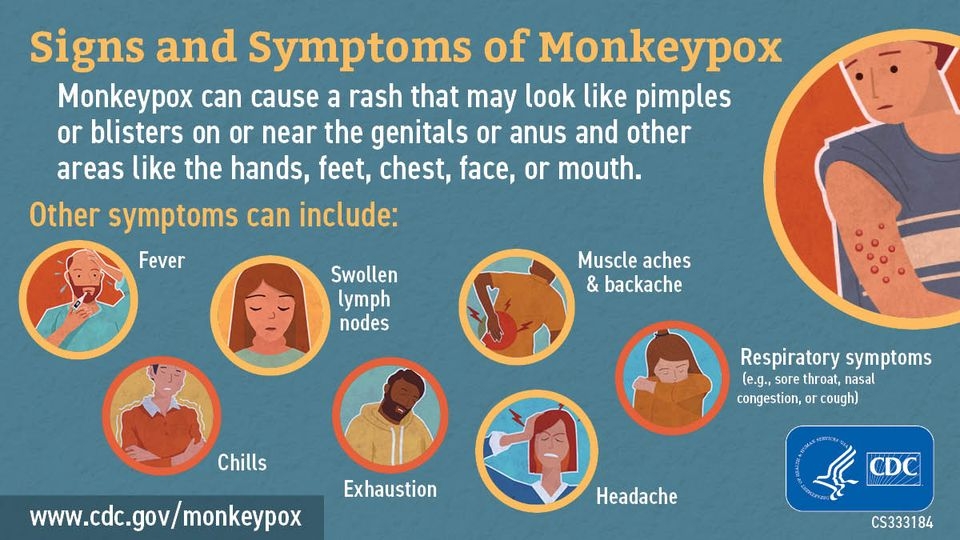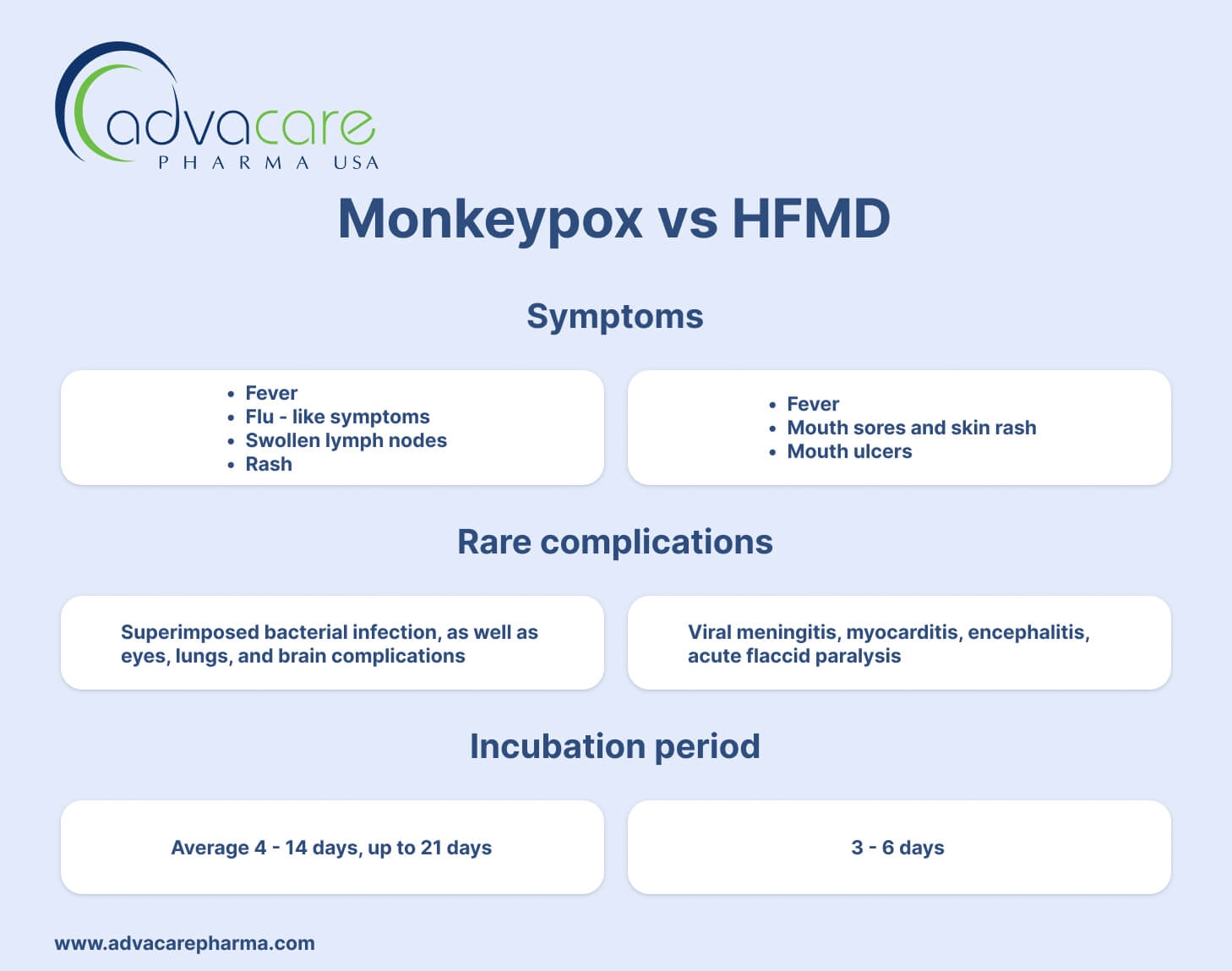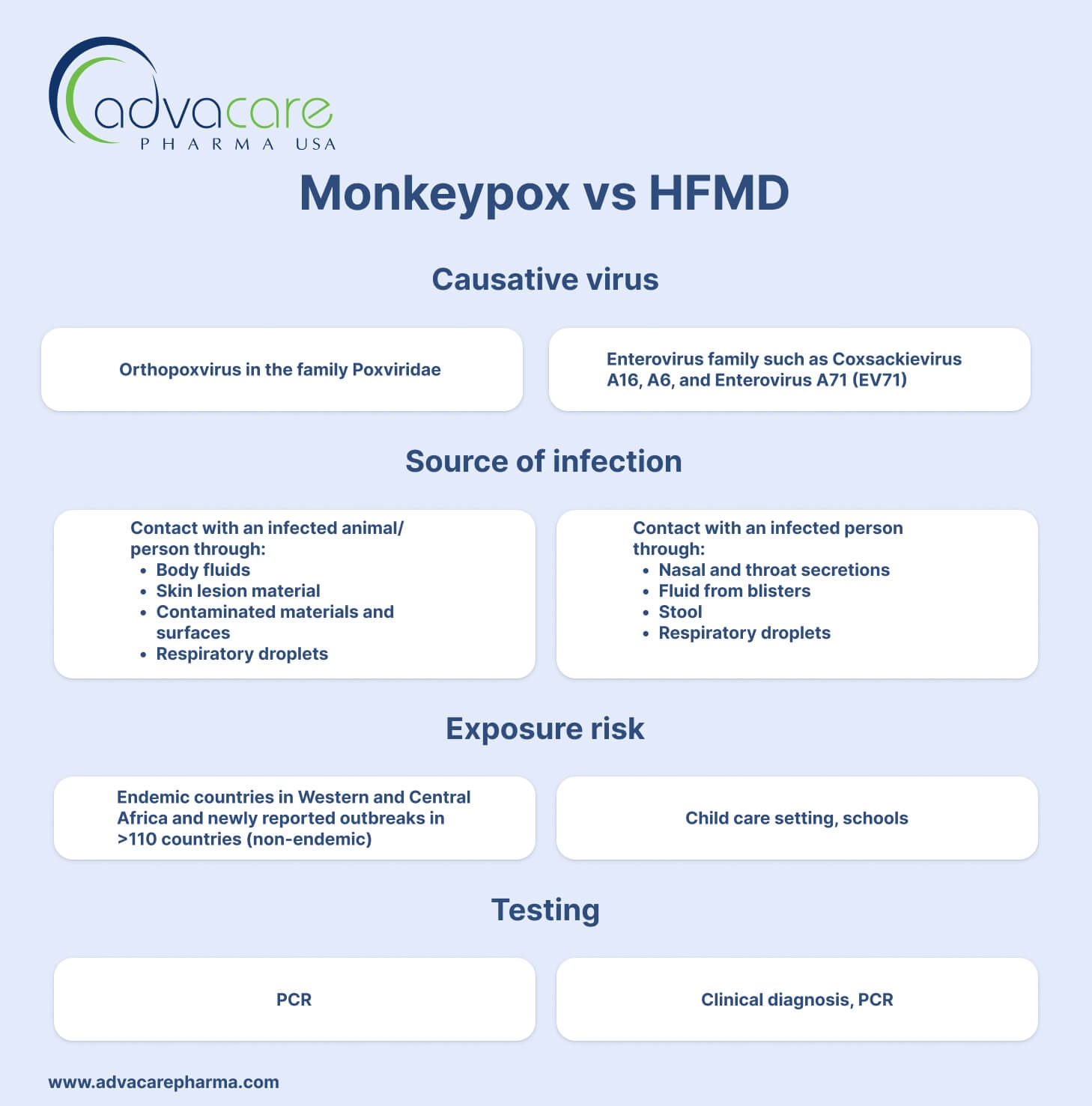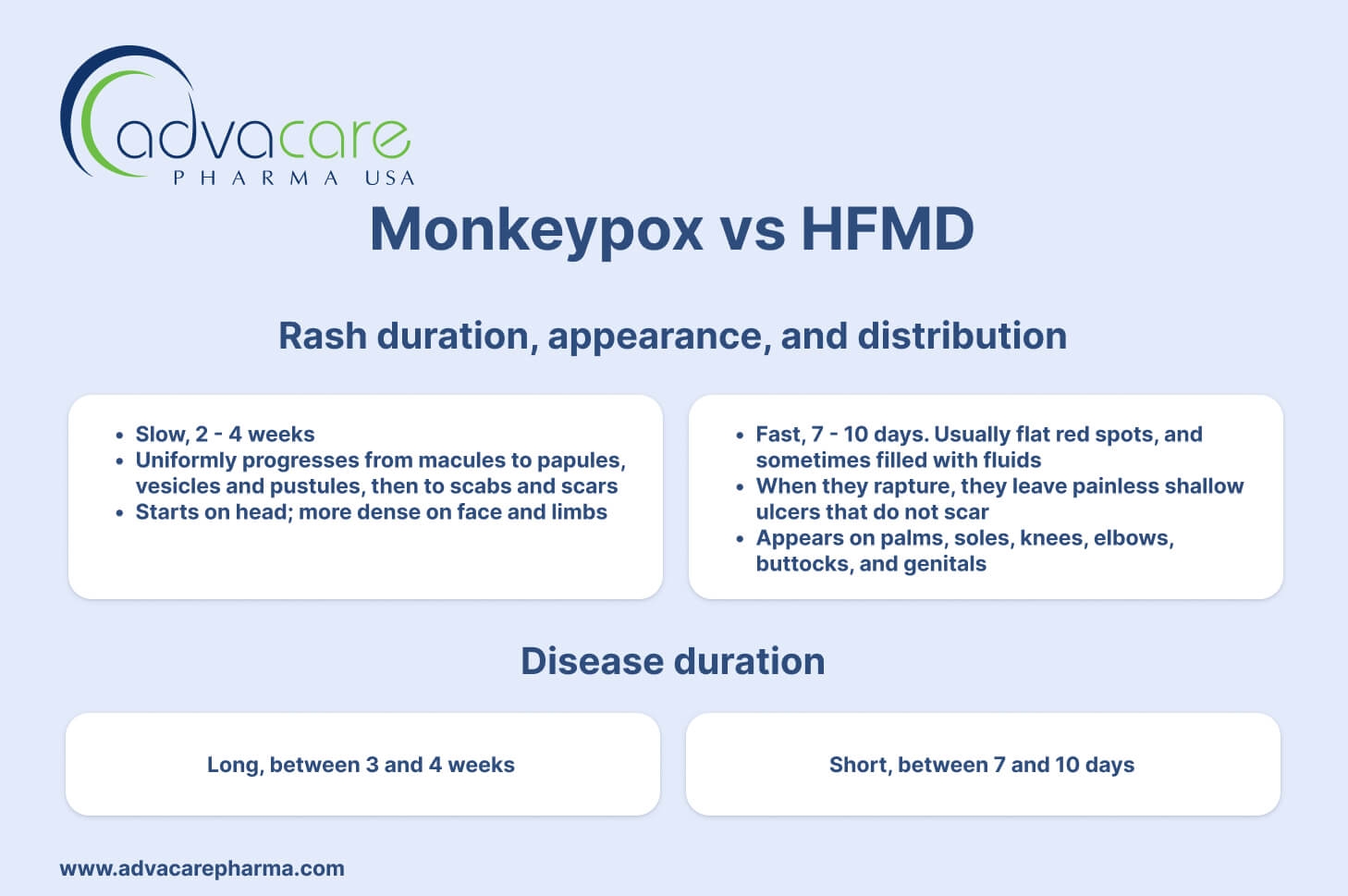Hand, Foot, and Mouth Disease vs. Monkeypox: Symptoms and Precautions

Contents Overview
Mpox and HFMD Signs and Symptoms

Mpox (previously known as monkeypox) and HFMD share similar signs and symptoms, which can make it challenging to distinguish between them. Both diseases can lead to flu-like symptoms and the development of sores or blisters on the hands, feet, and mouth.
Monkeypox and Hand, Foot, and Mouth Disease Symptoms
Mpox and Hand, Foot, and Mouth Disease (HFMD) share similar signs and symptoms, making them difficult to distinguish. Both diseases can cause flu-like symptoms and the development of sores or blisters on the hands, feet, and mouth. Monkeypox typically progresses in stages, starting with flu-like symptoms such as fever, swollen lymph nodes, headache, muscle aches, and fatigue, followed by a rash that evolves from flat lesions to fluid-filled blisters and pustules.
In contrast, HFMD usually presents with fever, mouth sores, and a skin rash, primarily affecting children. While HFMD is generally mild, it can lead to complications such as dehydration, nail loss, viral meningitis, and, in extremely rare cases, encephalitis or paralysis.
Stages of Monkeypox and Hand, Foot, and Mouth Disease
Mpox progresses through three stages: an incubation period of 1-2 weeks during which the person is symptom-free and not contagious, followed by a prodrome phase where early symptoms like fever, malaise, headache, sore throat, cough, and swollen lymph nodes appear, potentially making the person contagious. The final stage involves a rash that progresses through various forms, with the person remaining contagious until all scabs have fallen off.
Hand, Foot, and Mouth Disease (HFMD) typically manifests in two stages: initial flu-like symptoms, including mild fever, sore throat, and loss of appetite, followed by the appearance of an itchy rash on the hands, feet, and other body parts, along with painful mouth sores and swollen lymph nodes. HFMD symptoms generally resolve within 7-10 days, though recovery may take longer in children under two years of age.

Mpox and HFMD Risk Factors

Risk factors for both Mpox and Hand, Foot, and Mouth Disease (HFMD) include close contact with infected individuals, making them highly transmissible in communal settings such as schools, daycare centers, and households.
Mpox can spread through direct contact with skin lesions, bodily fluids, or respiratory droplets, particularly during prolonged face-to-face interaction, and through handling infected animals in endemic regions.
HFMD primarily affects young children and spreads via respiratory droplets, direct contact with saliva, stool, or blister fluid, and contaminated surfaces.
Poor hygiene practices further elevate the risk for both diseases, with individuals in close-contact environments and those with weakened immune systems being particularly vulnerable.
Monkeypox Outbreak and Precautions

Major Outbreaks
The recent Mpox outbreaks involve three distinct epidemics: In the Democratic Republic of the Congo (DRC), the Clade I variant spreads primarily among children through animal-to-human transmission in the eastern DRC. The Clade Ib variant has emerged in eastern DRC and neighboring countries, spreading through densely populated refugee camps. Meanwhile, the Clade IIb variant in Nigeria, linked to global outbreaks since 2022, continues to spread internationally, affecting a broad demographic.
Monkeypox and Hand, Foot, and Mouth Disease Prevention
To prevent both Mpox and Hand, Foot, and Mouth Disease (HFMD), it’s important to follow similar preventive measures. Frequent handwashing with soap and water for at least 20 seconds is a key step in protecting against both infections, especially after using the bathroom, changing diapers, or coughing. Avoid close, skin-to-skin contact with individuals who have visible symptoms, such as rashes or blisters, and refrain from sharing personal items like utensils, bedding, or clothing with those who are infected. Additionally, regularly clean and disinfect frequently touched surfaces and shared items, including toys and doorknobs. While getting vaccinated with the JYNNEOS vaccine can provide specific protection against mpox, and though there is no vaccine for HFMD, these shared preventive actions can significantly reduce the risk of contracting either virus.
How to tell Monkeypox apart from Hand, Foot, and Mouth Disease

At first glance, it can be challenging to differentiate between HFMD and mpox, as the initial rash stages — characterized by flat red spots — can appear similar. However, these rashes progress differently. Mpox lesions typically develop more slowly over two to four weeks, evolving into pus-filled blisters with a central indentation before crusting over and eventually falling off. In contrast, HFMD rashes usually present as flat red spots on the hands and feet, accompanied by blisters in the mouth, and tend to resolve within seven to ten days. Another key difference is that mpox may cause swollen lymph nodes, a symptom that is less common in HFMD.
References: NIH 2022 "Hand, Foot, and Mouth Disease as Differential Diagnosis of Monkeypox, Germany, August 2022" CDC 2024 "Signs and Symptoms" CDC 2024 "HFMD Symptoms and Complications" CDC 2023 "Clinical Recognition" WebMD 2024 "Hand, Foot, and Mouth Disease (HFMD) Explained" Froedtert 2024 "Mpox Symptoms, Risk Factors and Prevention" Mayoclinic 2022 "Hand-foot-and-mouth disease" CDC 2024 "FACT SHEET: United States Response to the Clade I Mpox Outbreak in Several African Countries" WHO 2024 "WHO Director-General declares mpox outbreak a public health emergency of international concern" WHO 2023 "Mpox" CDC 2024 "How to Protect Yourself" CDC 2024 "About Hand, Foot, and Mouth Disease"
Don't want to miss the next AdvaCare article?

Recommended Content

The Proven Benefits of Vitamin D


Veterinary Medicines Registration in Indonesia


Supplement Distribution: Understanding Key Distribution Channels
